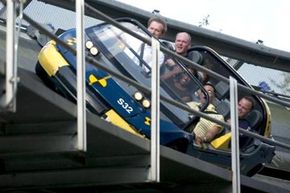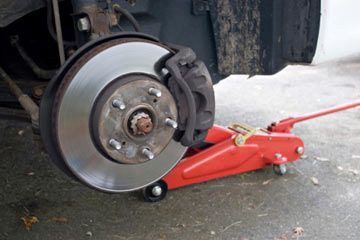Before you even think about running any vehicle through a braking distance test, you should consider several factors that will inevitably affect the outcome. After all, it's more than just mashing the brake pedal. Let's take a look at each briefly.
Tires and Traction
Tires are one of the most important elements when stopping a vehicle quickly and efficiently. When engineers calculate braking distance, they use several variables. One of them is traction coefficient. The higher the traction coefficient is, the shorter the braking distance will be [source: Jones & Childers]. Thus, the braking distance can change greatly based on the type and condition of the vehicle's tires.
Tires with little or no tread will be more susceptible to skidding during heavy braking. When the tires skid (a decrease of the traction coefficient), they lose traction and increase the braking distance. Tire compound or makeup can also change braking distance. Some high performance tires offer better adhesion under heavy braking and won't break loose or skid as easily as harder tires.
Braking and Suspension Systems
Tires work hand in hand with the vehicle's braking and suspension systems. If any of these components aren't up to specification, the vehicle's braking distance can change. Worn brake drums, rotors, pads, shoes or leaky brake lines will have an adverse affect on braking. And since weight transfer has so much to do with braking, worn shocks and springs will only add distance during braking.
When these components are worn, the weight wants to move to the front of the vehicle when you hit the brakes hard. And we've already illustrated how weight contributes to braking distance.
Road Conditions
Finally, road conditions will affect braking distance. Dirt and gravel roads don't offer good traction and increase braking distance. Freshly paved asphalt offers the best adhesion.
Consider the weather too. Wet roads increase braking distance. Snowy and icy roads decrease traction even more. Driver ability and whether or not the vehicle is equipped with an anti-lock braking system (ABS) must also be taken into consideration.
These conditions all factor in braking distance. As you'll find out next, the driver plays a key role in all of this too. In the next section, we'll take all of these factors into account and go through a braking test. Let's get to it.




